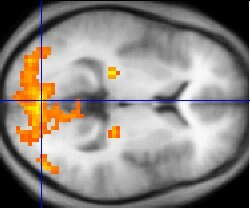Asperger syndrome
Asperger syndrome (often Asperger's syndrome) is a mild form of autism. Formerly, it was treated as its own disease, but now it is considered part of autism spectrum disorder. The disease is named after Hans Asperger. [1]
It affects the way in which a person understands, talks, and acts with other people. A person who has Asperger syndrome may not fit in well with other people and may be unable to act like everyone else in different social situations.[2] Asperger syndrome is called a developmental disorder, and is not considered a mental illness. Most adults with Asperger syndrome can learn how to make friends, do useful work, and live successful lives. People with it sometimes call themselves Aspies.[3]
People who have it will have to deal with it for the rest of their lives. However, they can try many things to help them and learn how to be able to reduce the impact on their life. One solution can be medication to restrict the different symptoms like aggression. The big problem with people affected by Asperger's is that they cannot understand emotions or how people think. Therapists try to help the person with that. They will do many things like acting an emotion and letting the Asperger people guess what it is.[4]
Causes and management
Asperger syndrome may be observed and diagnosed in early childhood. No one knows exactly what causes it, but it is thought to have a genetic cause. The part of the brain that controls a person's "social behavior" (understanding and communicating with other people) may grow or function differently in a person with Asperger syndrome. Another part of the brain that may be different is the part that controls some body movement such as balance. A person with this condition may walk or act in a clumsy way and have trouble doing body actions such as sports. They may also do physical actions repetitively, such as rocking, flapping their hands, or tapping their feet. The condition seems to run in families. Parents who have Asperger's syndrome often have children who have it or another kind of autism.[5][6]
Asperger syndrome cannot be found by testing blood or looking at someone's body. A medical doctor needs to talk with the person and other people who know him or her well, to watch how the person moves and behaves, and to learn about the person's past. Sometimes a doctor believes by mistake that the person has schizophrenia, obsessive-compulsive disorder, ADHD, or mental retardation instead. Tourette syndrome with "tics" (repetitive, uncontrolled actions like twitching, blinking, and coughing) sometimes comes with Asperger syndrome. Many people with Asperger syndrome also have ADHD and/or OCD. It has been estimated that beyond half of the people with the syndrome, also carry some other type of syndrome, disorder, disability, disease, or illness. The MSD Manual says "strong evidence supports a genetic component".[7]
People who have Asperger syndrome have normal to high intelligence. As children, they may need special help at home and school to learn social behavior. The syndrome cannot be made better by taking medicine.[8] People who have this condition are sometimes given medicine to help them with depression, which is often experienced by people with the syndrome.
People with Asperger syndrome can have a hard time fitting in with other people. They may want to make friends and actively approach others, but do it in a way that seems weird or awkward to other people. This social awkwardness has been called "active but odd".[5] Adults who have it usually learn enough "coping skills" to act in a way that seems normal, but often with a few differences. Most people with the syndrome can communicate clearly with friends and family. They may have more difficulty in communicating with new people. People who carry the syndrome can sometimes seem rude or uninterested during conversations, without meaning anything wrong. They may also get stressed or unsettled when things do not go their way.
Characteristics
Asperger's syndrome characteristics include:[9]
- Engaging in long, one-sided conversations, without noticing if the listener is listening or trying to change the subject
- Displaying unusual nonverbal communication, such as lack of eye contact, few facial expressions, or awkward body postures and gestures
- Showing an intense obsession with one or two specific, narrow subjects, such as baseball statistics, train schedules, weather, or snakes
- Appearing not to understand, empathize with, or be sensitive to others' feelings
- Having a hard time "reading" other people or understanding humor
- Speaking in a voice that is monotonous, rigid, or unusually fast
- May prefer to be alone
- Gets stuck in their own heads
- Has strange thoughts and prejudices about the outside world
- Shows problems in meeting new people
- Does not enjoy instant changes
- Feels uncomfortable around people, usually strangers
- Has an eye for details and notices the small things
- Follows their own habits, routines, and traditions, for example; always buying the same type of food and drink, or listening to the same song over and over again
Asperger syndrome is noticeable when the person acts differently in social situations. Their social disabilities can have different levels. Not all people with Asperger syndrome have the same level of it. This characteristic is not the only one. Someone who dislikes people in general does not necessarily have Asperger's. Other characteristics that can be identified is that people with Asperger's hate any changes in their routine. They also dislike having eye contact. Most of the time they will try to avoid it and look away. Usually, people with Asperger syndrome have less facial expression than anybody else. There are many characteristics, and if someone only has some of them then they likely don't have Asperger's.[10] Commonly, people with the syndrome tend to hum or pronounce different sounds to themselves, which they have heard in their surroundings, such as a reporter's voice, a man on the radio, lyrics from songs, words, things they have read, or what people around them usually say. They may repeatedly mention these words or phrases again and again.
History
In the 1940s, a doctor named Hans Asperger studied some children who were different from most other children that he knew but were like each other. He called them "little professors" because he thought that they were interesting and wrote a book about them. Dr. Asperger thought his "little professors" had a different sort of personality.
In the 1980s, Dr. Lorna Wing made up the name "Asperger syndrome" for people with high-functioning autism after research into Hans Asperger's work.
In 1994, Asperger syndrome was added to the Diagnostic and Statistical Manual of Mental Disorders (DSM-IV).
In 2013, Asperger syndrome was removed from the DSM.[11]
In 2019, Asperger's syndrome was removed from the ICD. The diagnosis is now autism spectrum disorder.[12]
Statistics
Asperger syndrome is much more common in males than females. Statistics say that three males are affected for every one female.[13][14]
It is widely discussed how common the syndrome is, as there are figures that show very different numbers. But, it probably lies between 1 in every 250, all the way up to 1 in every 10,000. A 2003 review of epidemiological studies of children found autism rates ranging from 0.03 to 4.84 per 1,000, with the ratio of autism to Asperger syndrome ranging from 1.5:1 to 16:1.[15][16]
Asperger Syndrome Media
Functional magnetic resonance imaging provides some evidence for mirror neuron theory.
References
- ↑ Skuse, David (2018-05-09). "Few people mourn Asperger syndrome's loss from diagnostic manuals". Spectrum | Autism Research News. Retrieved 2023-01-27.
- ↑ The Nemours Foundation. "An Autism Spectrum Disorder" Archived 2013-07-19 at the Wayback Machine, A Children's Health System.
- ↑ "What Is Asperger Syndrome?". Autism Speaks. Retrieved 29 January 2022.
- ↑ Mayo Clinic. "Alternative medicine", Asperger's syndrome, London, 27 October 2005. Retrieved on 27 October 2005.
- ↑ 5.0 5.1 McPartland, J.; Klin, A. (2006). "Asperger's syndrome". Adolescent Medicine Clinics. 17 (3): 771–88, abstract xiii. doi:10.1016/j.admecli.2006.06.010 (inactive 18 July 2025). PMID 17030291.
{{cite journal}}: CS1 maint: DOI inactive as of July 2025 (link) - ↑ Foster, B.; King, B. H. (2003). "Asperger syndrome: To be or not to be?". Current Opinion in Pediatrics. 15 (5): 491–494. doi:10.1097/00008480-200310000-00008. PMID 14508298.
- ↑ "Autism Spectrum Disorders – Pediatrics" in Merck Manuals Professional Edition. Retrieved 26 January 2019. [1]
- ↑ Towbin KE (January 2003). "Strategies for pharmacologic treatment of high functioning autism and Asperger syndrome". Child and Adolescent Psychiatric Clinics of North America. 12 (1): 23–45. doi:10.1016/S1056-4993(02)00049-4. ISSN 1056-4993. PMID 12512397.
- ↑ "Mayo Clinic staff".
- ↑ "What Is Asperger Syndrome?" -. The National Autistic Society, n.d. Web. 12 May 2014.
- ↑ Tsai, Luke Y.; Ghaziuddin, Mohammad (1 February 2014). "DSM-5 ASD Moves Forward into the Past". Journal of Autism and Developmental Disorders. 44 (2): 321–330. doi:10.1007/s10803-013-1870-3. PMID 23807202. S2CID 3515088.
- ↑ "ICD-11 for Mortality and Morbidity Statistics". icd.who.int. Archived from the original on 2018-08-01. Retrieved 2023-01-27.
- ↑ MedicineNet, Inc. "Definition of Asperger syndrome" Archived 2013-03-21 at the Wayback Machine, Health News of the Week.
- ↑ Galanopoulos A, Robertson D, Woodhouse E (4 January 2016). "The assessment of autism spectrum disorders in adults". Advances in Autism. 2 (1): 31–40. doi:10.1108/AIA-09-2015-0017.
- ↑ Fombonne E, Tidmarsh L (January 2003). "Epidemiologic data on Asperger disorder". Child and Adolescent Psychiatric Clinics of North America. 12 (1): 15–21, v–vi. doi:10.1016/S1056-4993(02)00050-0. PMID 12512396.
- ↑ Fombonne E (2007). "Epidemiological surveys of pervasive developmental disorders". In Volkmar FR (ed.). Autism and Pervasive Developmental Disorders (2nd ed.). Cambridge University Press. pp. 33–68. ISBN 978-0-521-54957-8.
Other websites
- WebMD Reference pages for Asperger syndrome
- Neurodiversity website History and information on people with Asperger syndrome
- Wrong Planet Archived 2021-02-11 at the Wayback Machine designed for individuals (and parents / professionals of those) with Autism, Asperger Syndrome, ADHD, PDDs, and other neurological differences.
- Aspies Central A friendly community for Asperger, Autism & other associates even for those not on the spectrum.
- Asperclick Archived 2015-04-19 at the Wayback Machine A forum specifically for AS, but open to other ASDs.
- Think Universal Archived 2024-02-21 at the Wayback Machine Chinease Information about Asperger Syndrome



